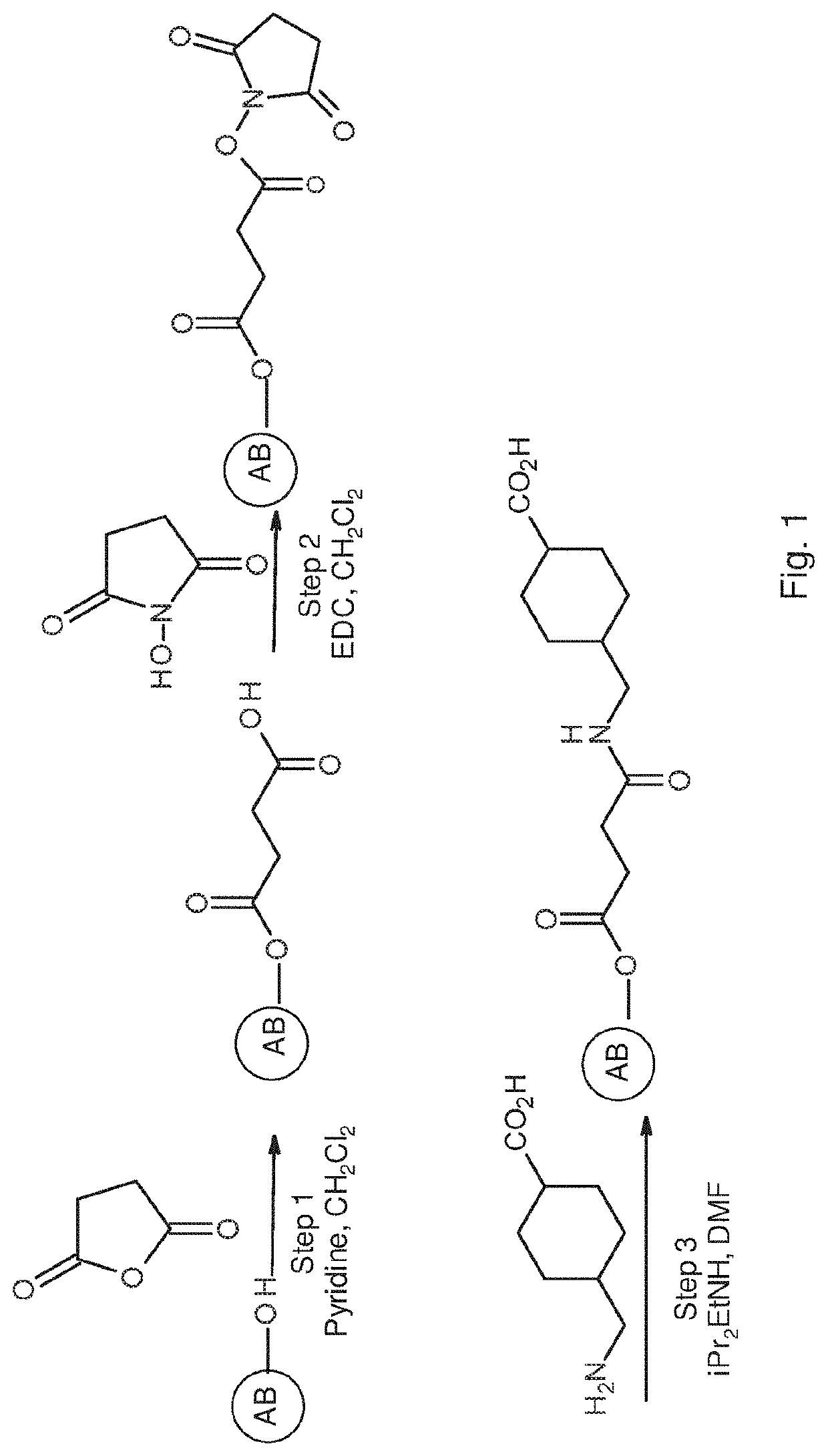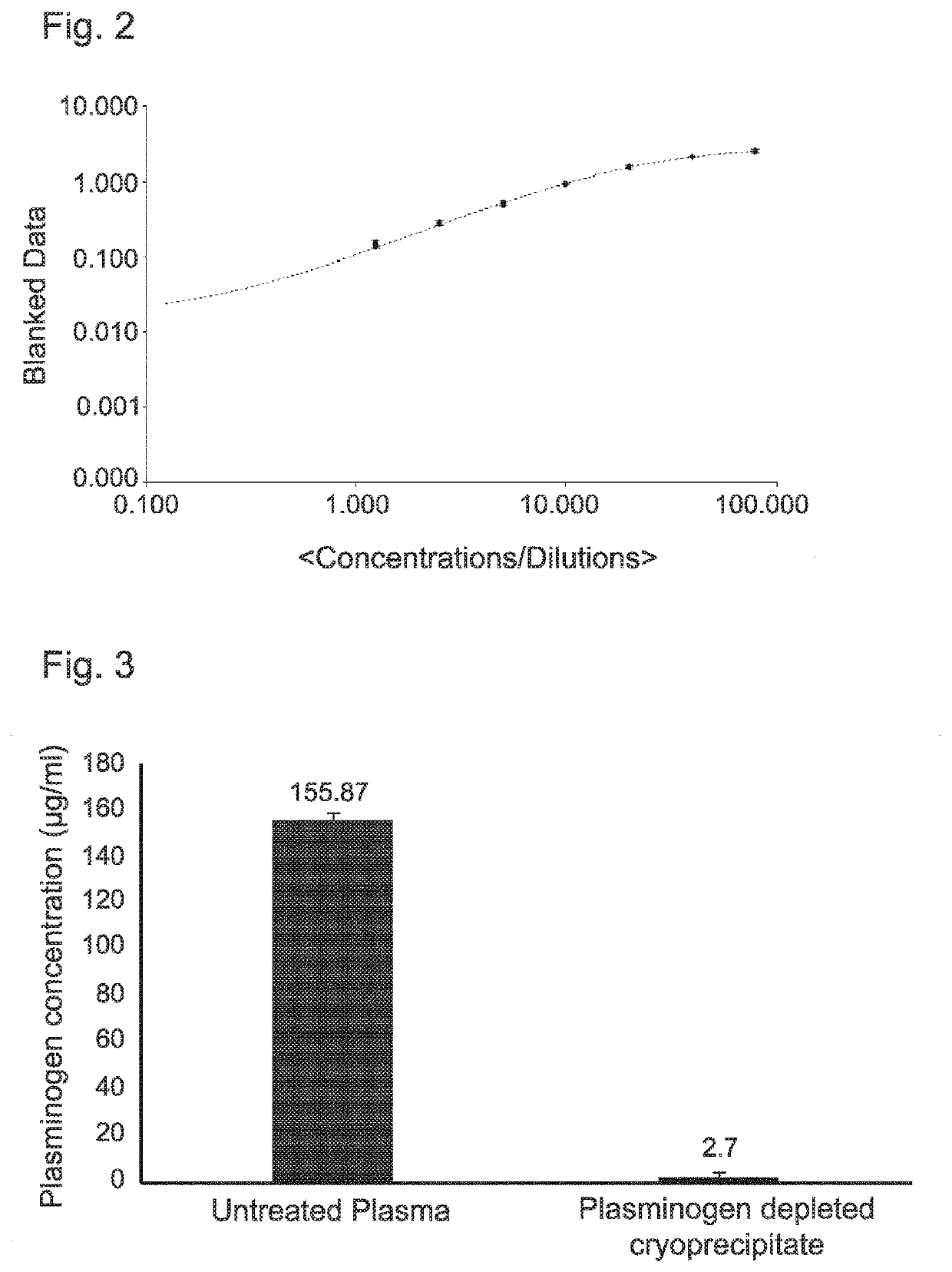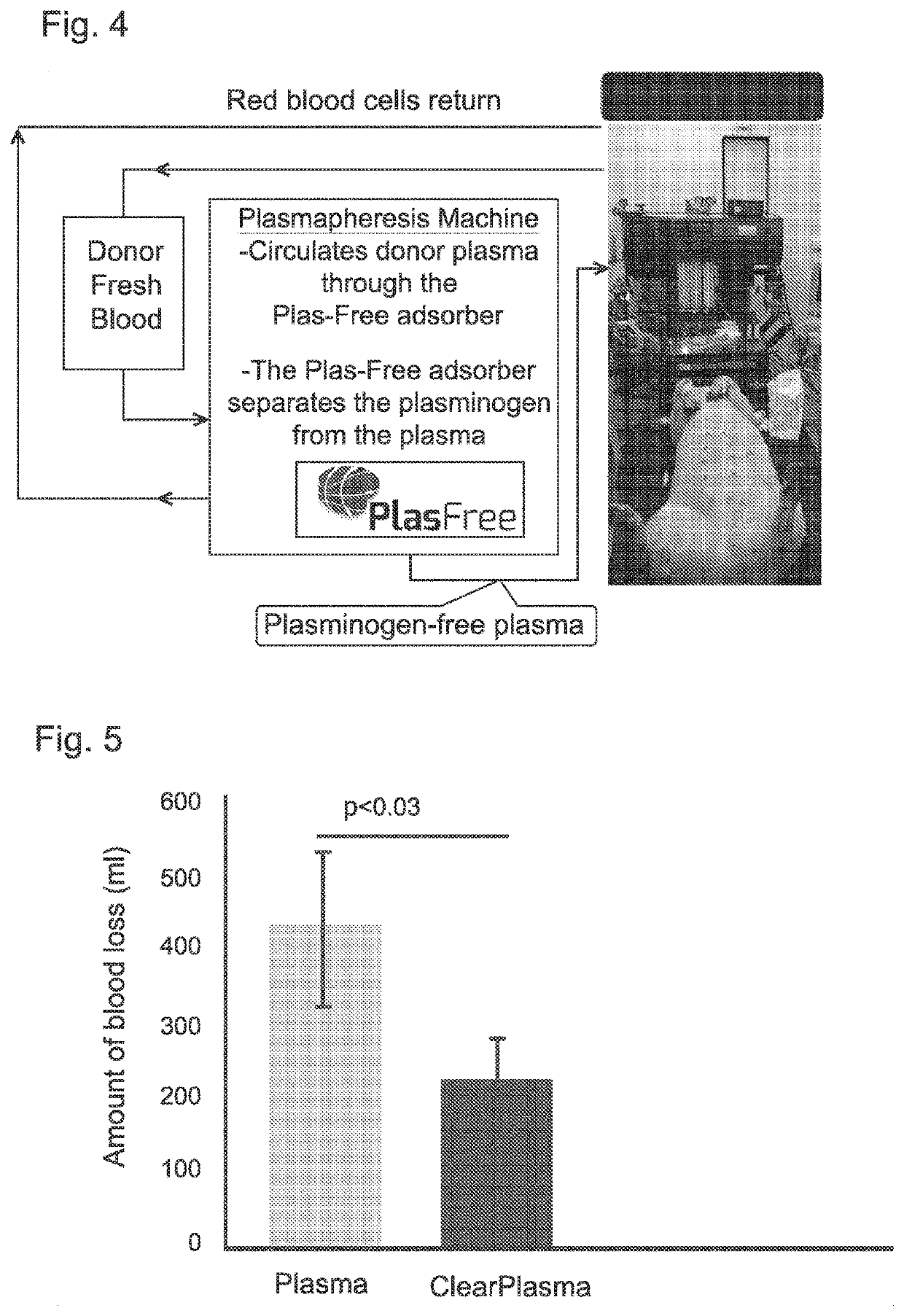Extracorporeal device and matrix for removing fibrinolytic proteins from biological fluids, methods and uses thereof
a fibrinolytic protein and extracorporeal device technology, applied in the field of coagulation and transfusion medicine, can solve the problems of hemostatic function, rapid clots, impairment (or lack) of clot formation, etc., and achieve the effects of reducing fibrinolytic activity, reducing bleeding, and preventing bleeding
- Summary
- Abstract
- Description
- Claims
- Application Information
AI Technical Summary
Benefits of technology
Problems solved by technology
Method used
Image
Examples
example 1
[0610]Synthesis of Resins
example 1.1
Synthesis of Conjugate 1
[0611]
[0612]Resin Production and Filter Packing Scale Up
[0613]This process was performed according to the NHS-activated Sepharose Fast Flow (GE Healthcare cat. #17-0906-02) product instructions.
[0614]The process started with a new clean batch of naïve beads received from the manufacturer along with proper documentation.
[0615]The resin volume used for this protocol was 112 mL drained resin (8×14 mL) in 8×50 mL tube (originally 70% resin slurry; 14 mL drained resin per tube). This protocol yield a batch of three full ClearPlasma filters. Preparations, coupling and post-coupling washes were done as clean as possible. The endotoxin wash and packing stages were done in a clean environment.
Labware Used
[0616]0.2 μm filters (e.g. Steritop), 3×1 L bottle (1 mM HCl; 0.1M Tris-HCL pH 8.5; 0.1M Acetate buffer, 0.5M NaCl, pH 4.5), 2×0.5 L bottle (coupling buffer; 4M Urea), 4×1 L bottle (70% EtOH, 50 mM Tris-HCl pH 7.5, 50 mM Tris-HCl, 0.1NaCI, pH 7.5 in pyrogen-free water...
example 1.2
Synthesis of Conjugate 2
[0673]
[0674]The reaction for the preparation of conjugate 2 is schematically represented in FIG. 1.
[0675]More specifically, the following procedure was employed:
[0676]1. An amount of 4.2 ml of Sepharose 4B200 (Sigma Aldrich) was washed with acetone through filter glass funnel using a shaker. It was considered that the Sepharose contain 1 ml of reactive functional group and thus that 4.2 ml contain 4.2 mmol.
[0677]2. Succinic anhydride (0.42, 4 mmol) were added to the slurry of beads in CH2Cl2 (3 ml) followed by the addition of Pyridine (0.339 ml). The mixture was shacked overnight.
[0678]3. The beads were filets and washed with acetone.
[0679]4.The beads were suspended in CH2Cl2 and N-Hydroxylsuccinamide NHS (0.483 g) were added followed by the addition of EDC (0.8 g). The mixture was shaken overnight and then filtered.
[0680]5. The product was suspended in DMF (3 ml), N,N-Diisopropylethyl amine (0.54 g) and 4-(AMINOMETHYL)-CYCLOHEXANECARBOXYLIC ACID (0.66 g) wer...
PUM
| Property | Measurement | Unit |
|---|---|---|
| particle size | aaaaa | aaaaa |
| lone electron pair | aaaaa | aaaaa |
| volume | aaaaa | aaaaa |
Abstract
Description
Claims
Application Information
 Login to View More
Login to View More - R&D
- Intellectual Property
- Life Sciences
- Materials
- Tech Scout
- Unparalleled Data Quality
- Higher Quality Content
- 60% Fewer Hallucinations
Browse by: Latest US Patents, China's latest patents, Technical Efficacy Thesaurus, Application Domain, Technology Topic, Popular Technical Reports.
© 2025 PatSnap. All rights reserved.Legal|Privacy policy|Modern Slavery Act Transparency Statement|Sitemap|About US| Contact US: help@patsnap.com



